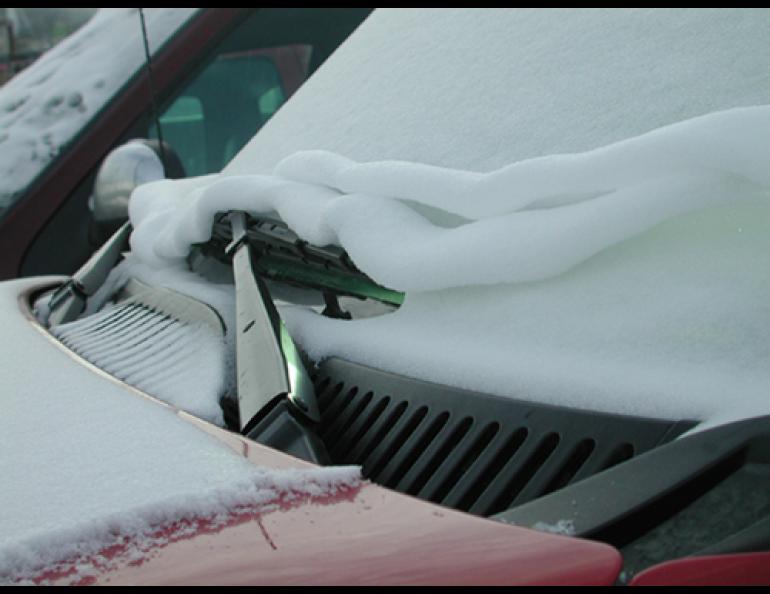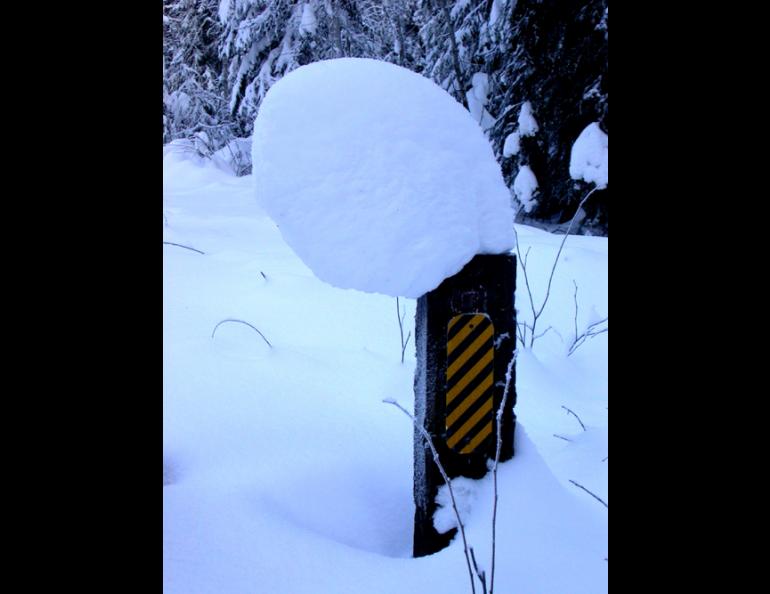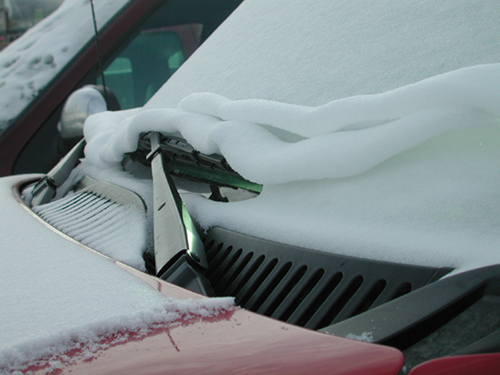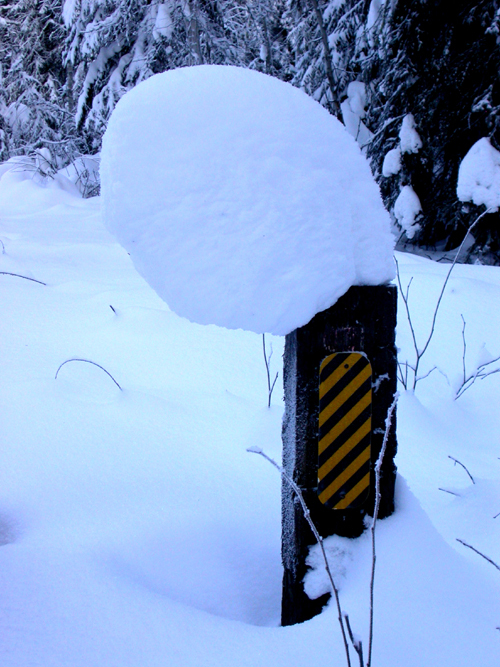

Leaning towers of snow explained
Pete Wilda, a Fairbanks reader of this column, wants to know how the snow here can bend off railings and loop from power lines without breaking. He grew up in eastern Wisconsin and doesn’t remember the snow defying gravity there.
Snow tilts and bends in Interior Alaska because there’s not much wind and because it’s cold, said Matthew Sturm of the Cold Regions Research and Engineering Laboratory in Fairbanks. Sturm is one of a handful of Alaska scientists who study snow. He enjoys it so much that a few years ago he made a snowmachine traverse from Nome to Barrow, digging snowpits and taking samples along the way.
“At low temperatures, the snow deforms slower,” Sturm said of the bending snow phenomenon. “In warmer places like Colorado, a dollop of snow that begins to lean may topple in a shorter time than the snow here.”
A few other variables are responsible for our leaning towers of snow, Sturm said. The snow in Interior Alaska contains a lot of air, so gravity doesn’t pull on it as strongly as it does wetter, heavier snow. Also, cold weather tends to prevent snow from thawing and lubricating the contact point between the snow and the wire or fencepost.
Having solved the mystery of the slanting snow, Sturm explained a unique quality of snow that causes trails to set up after the passage of feet, tires and snowmachines. Snow “sinters,” which means that it bonds together without having to melt.
“You just stick the ends together, and snow becomes a cohesive unit,” Sturm said. “Without sintering, snow would behave like loose sand. I took a picture of snow on my windshield the other day that slid down in rolls, just like a carpet. Sand could never do that.”
Snow crystals begin bonding to other crystals after they drop from the sky and continue the process on the ground. Sintering happens faster when fragile snow crystals are shattered, as when snow falls off a roof or when a snowmachine packs down powder snow. With more sharp points touching one another and less air in the snowpack, the snow can turn from sugar to concrete. The more disturbed the snow grains, the harder they will set up, Sturm said. Wind is a great producer of snow slabs as it smashes snow grains into one another. One of Sturm’s favorite experiments is to take a Shop Vac outside, suck up some snow, and leave it for a few hours.
“When you take it out of there, it’s hard as a rock,” he said.
Though many people talk about trails setting up better in colder weather (and colder snow is indeed harder than warmer snow), the sintering process goes faster when it’s warmer, Sturm said.
“You want active molecules,” he said. “The closer they are to the melting point the more vigorous (sintering) is.”
As the snowpack sinters, it seems to deflate even when the temperature stays below freezing. That’s one of the reasons why the National Weather Service might say 60 inches of snow have fallen this winter, but you only see about two feet on your roof.
“New snow settles pretty rapidly,” Sturm said. “Over time, the whole snowpack will settle. It doesn’t shrink; it’s more like pushing air out of a sponge.”
Sturm said people in Fairbanks and other subarctic continental locations can be proud of the “near-perfect” snow that falls here. The snow of Interior Alaska is some of the lightest snow that falls. Because there’s little wind, snow crystals often reach the ground without colliding with other crystals, preserving their six-pointed perfection for a few moments before merging with the snowpack, or adding to that rope of snow hanging from the power line.






